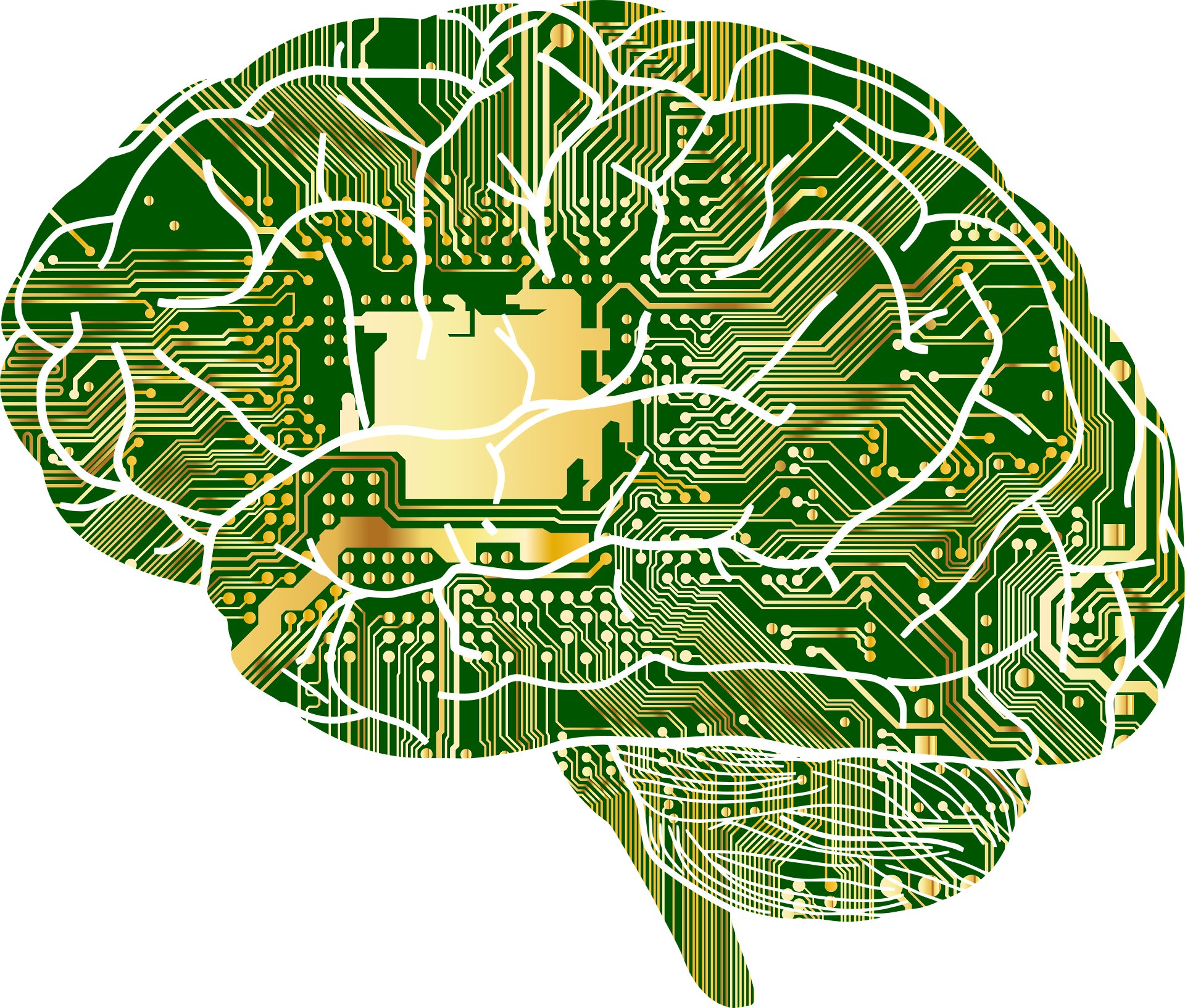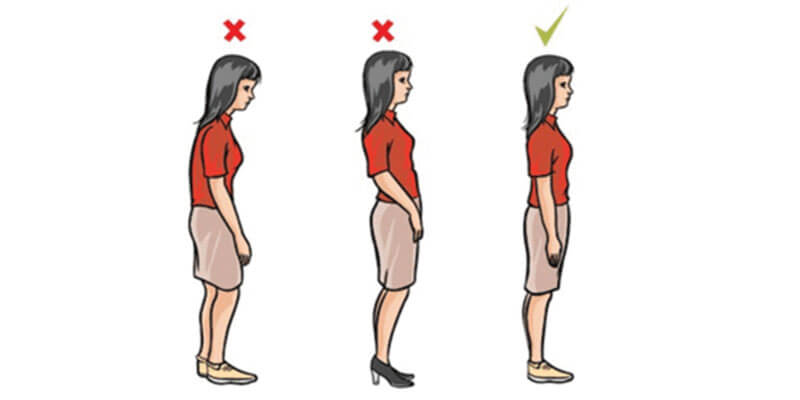I had a gentleman come into my office last week who had heard about my program. He was of middle age, and had been suffering from low back and neck issues for many years. No one had been able to help him, other than the Dr. I currently partner with. He had just come from his appointment with him. The Dr. I currently work with is a miracle worker, he has helped people that no one else has been able to help. But even he had only had limited success in this case.

I explained how my program works, some of the science behind it, and how it could potentially work for this gentleman in regards to his outcome. He asked me a question that has been with me ever since our meeting: he asked me “So I just need to get stronger to fix this imbalance right?” It was a great question. I calmly explained to him how this was not the case due to many factors, and he fully agreed with me upon leaving our meeting. He even mentioned that everything made “complete sense” and that he “wished he had met me earlier in life.” I sat thinking about the meeting for quite some time, and realized the “factors” that I had just explained were not nearly as clear to other people as they were to me; they needed clarification. Today’s blog is completely devoted to addressing the following question:
“Why can’t I just do exercises on my own to fix this problem?”
The answer is simple, and yet complex. Everything has to do with the brain and how we learn.

I will start with a common example that I see weekly in my work, and build on it.
A gentleman walks into my office and tells me he is looking to improve his posture and address his back issues. He mentions that he has tried PT and had some success in the past. He mentioned he has tried chiropractic and had some success. He talks about massage and tissue manipulation techniques, all of which he mentions help him for a time. But within a few weeks of any appointment, his back pain returns. He complains that many of the movements he has been given that are designed to “strengthen” muscles, only cause pain for him. He has tried glute exercises and abdominal exercises but they always leave his back sore and in pain. He feels stuck and hopeless.
If this is a familiar story to you, there is a reason for it. 90% of the people I see daily come to me after years of trying every other method and option, with limited success. I know this story well. I was stuck for most of my 20’s and early 30’s in the same pattern. I was so incredibly frustrated, and it impacted my day-to-day life greatly. There were simply some things I physically could not do, because my back would seize up and I would be down for a few weeks. I lived through that. I know it intimately.
The irony of dealing with muscular imbalances is that by the time you have serious imbalance, you usually have neurological changes that have changed your firing patterns. What does this mean? You are flexing muscles you are not intending to flex when you try to strengthen the targeted area. Let me explain. When the power goes out in your house, what is the first thing we do when we walk into a room? We try to flip the light switch. Why? We have done that particular movement so many times it is ingrained in our brains, despite how we consciously know the power doesn’t work.

The brain works in the exact same way. Despite your conscious desire, if the brain has a set movement/firing pattern, it will fire no matter what. So how does this relate to our story?
The gentleman complained of back pain in exercise. But then when asked to flex muscles in isolation such as glutes or regions of the abdominals, he immediately mentioned he could “feel” his back. Why would he be able to feel his back when trying to flex different muscles? The reason is that he was unconsciously flexing them due to movement/firing patterns. (I have tested this extensively!) How can we ever get stronger in the necessary muscles if the act of flexing them is also firing the area that we want to avoid contracting? How can we fix our posture when posture is so dependent on having good muscular function of the core? We must reprogram the brain.

You may think that this sounds like a daunting or impossible task. I assure you that it is not. I have clients that have had incredible success even via online sessions due to the nature of the programming. I do not manipulate. I do not massage. I do not adjust. I simply teach your brain how to connect to the correct musculature. After the contraction is established, we must learn to load, and then finally move through that muscle. All of this is done with specific programming designed to alter breathing patterns, strength relationships, and neurological patterns. Yes, breathing is essential. The majority of us have breathing patterns that constantly shut off our abdominals and diaphragm. The back tightens as a result. Repetition is the key!
Some of you may be wondering why I have not done any blogs for the past few months. To be honest, I have been in constant discovery in step with two neurological chiropractors who are testing techniques I have recently created.

Those techniques represent a massive breakthrough to the world’s understanding of back pain and what drives it and what can stop it. I have waited to talk about it, in case I was mistaken. The evidence is clear. The technique works. All of my current clients who have had 10+ years of back spasms and pain have the ability to stop that spasm within 1-5 minutes on their own and “reset” their own back. This is not science fiction, this is about control and neurological muscle patterns. Even clients with a history of “SI Joint” issues have had remarkable results using this technique. The technique is now a staple of treatment for both chiropractors that were testing it. It is that effective.
Let’s return to the question at hand. Why can’t we just do exercises and watch videos online to fix our issues? Because it is very likely that your brain has zero connection to the muscle the exercise is designed to strengthen, or has a very weak connection (or the muscle is very weak) so you run into serious compensation which creates the symptoms and pain you are trying to fix! Is this always the case? Absolutely not. Some people are strong enough and have strong enough neurological connections to muscles that they can hop online and use a program.

But most of those people don’t have chronic pain! They are usually fairly athletic in their past, and are still somewhat active. There is another variable as well that I have not discussed, and that variable is trauma.
Trauma from a surgery or an injury/accident damages or alters neurological connection to that area in regards to muscle function. I see this every week, in regards to someone who has had an abdominal incision that lost all function of that specific area of their abdominals.

Trauma from injuries and accidents changes movement patterns (limping for example) that completely shut off certain muscle groups. Do this for long enough, and that becomes a neurological pattern! It is essential that we bring this area back “online,” as well as strengthen it. If you have no awareness of it, and the area has poor muscle tone, do you really think you are utilizing it in your movement? I argue strongly that you are not.
I mentioned posture, which you may be curious about. How can a program like this help with posture? Well I do not specifically teach posture in regards to holding positions. I believe that this method is flawed and leads to extremely poor muscular habits that are unstable for the human body. But by the time my clients are done working with me, they have almost perfect posture by default. How is this possible? Because by the time you have the right muscles firing and get the back out of flexion/extension patterns in standing posture, good posture should be natural and comfortable!

(Note, the first is the spine in flexion, the next is extension, and the last is neutral.)
So no, we can’t just exercise our way out of chronic back pain. We can’t just glute bridge our way to changing the way the brain fires specific muscles in specific patterns. But we can train and reprogram those patterns in a way that is life altering and permanent. We can alter strength relationships and movement patterns with programming that utilizes those newly built neurological pathways that ensure success and the elimination of compensation. For my clients, success is very often the elimination of pain, and the return to movement they thought lost to them forever.
So what’s next? I am currently testing new methods that are showing incredible promise to severe stroke victims that have lost function/movement in hands/arms. I am using a method I am calling “remapping.” I will be ready to talk about that soon….
Until then, I wish you all good health and good fortune in these times.
If you would like more information in regards to becoming a client, you can email me directly at anton@atheqsystem.com. If you would like more information regarding programming, please visit my Instagram, @Atheqsystem.
-A
References
Richardson. C., Hodges. P. Hides. J. (2005) Therapeutic Exercises for Lumbopelvic Stabilization. A Motor Control Approach for the Treatment and prevention of Low Back Pain. Churchhill Livingstone.
Schmidt, R, A. (1991) Motor Learning and Performance. Human Kinetics; USA.
Hodges, Paul. Changes in the Mechanical Properties of the Trunk. https://doi.org/10.1016/j.jbiomech.2008.10.001
Stress Effects on the Body. https://www.apa.org/topics/stress-body


We have been blessed to have been introduced to Anton about 2 1/2 years ago. My son Christian was injured on an ATV suffering a severe Traumatic Brain Injury.
Anton is so incredibly passionate about what he does, his enthusiasm is contagious, it’s I breath of fresh air! Anton seems to know things and understand things that no one else does!
If you have ever known anyone with a brain injury you would understand that you have to have a great deal of patience! One of the things I love the most about Anton is the incredible patience and understanding that he has always shown my son Christian! I can tell you if he didn’t have that we wouldn’t have been able to work with Anton that’s just the way it is with Brain Injury. But Anton has an abundance of patience and I find awesome!
I would highly recommend if anyone has a chance to work with Anton, do it! You won’t be sorry!
I can’t wait to see where you are 5 years from now, 10 years from now Anton! You are going to touch so many lives!
God bless you and your beautiful family!
Hi Anton I live in the UK how can I get your help in respect of neck and lower back pain?
Best wishes
Hi Jan, I do have an online program that is available for people that are not local. Please email me at anton@atheqsystem.com and I can answer any questions that you may have.
Thanks for reaching out!
I’ve used exercise for rehab and functional maneuvers with success over the years your system would be a nice addition
Hi Mark, many people I end up working with find me after years of PT and honestly trying everything else to find answers. I love it when I hear that PT and other methods have completely worked for people. But in my case, and in many others, they unfortunately could not. I have been told that my work is a completely different methodology and practice. I look forward to connecting with you!
Hi Anton. I suffer with chronic body pain. I’ve been diagnosed with tendinitis and arthritis. Can this help me?
Hi Judy, thanks for reaching out. It is impossible to know if my work is right for you unless we speak more in depth. Please email me at anton@atheqsystem.com and I am happy to continue the conversation.
Hi,
my name is Febo.
A true fan. Both of your dad Gino Vanelli and now you.
I do have a question.
I suffer from Multiple Sclerosis it’s 16 years.
I also have left hip arthritis and arthorossis. So now my back is in pain, I walk unbalanced and I can’t play soccer, ski or play drums anymore. Can you help ?
Hi Febo, I am sorry to hear about the problems that you have had. Thank you for your kind words as well. While my work does not directly address medical conditions, the muscular conditioning and control work can have a profound impact on your balance, strength, and your level of pain. I have worked with multiple clients who had similar issues. If you would like more information, I would recommend contacting me directly via my email at anton@atheqsystem.com
Hello,
I suffer from chronic neck pain and stiffness, also from limited range of motion while turning to the right. I have been diagnosed with so many conditions, chased all of them with the recommended treatment but no approach gave me a sustainable relief. I have had this issue since my age of 12, I am currently 67 and my condition is deteriorating. Any advice? Please comment, I thank you.
Hi Robert, sorry to hear about your chronic neck issues. I must be transparent. Giving advice to your particular situation is beyond the scope of a comment area. There are many things that may be at play here, and without speaking to you more in depth, I can not say if my work would be valuable or helpful to you. I have worked with clients who had neck issues, and when we addressed postural components of their movement and the muscular loading, they did experience improvement. If you would like more information please email me directly at anton@atheqsystem.com
Wow Anton! What a breakthrough! Your pain started you on this path of discovery. Your pain set you on this path and now you can support others in their journey. This is an example of how we are to give support to our fellowmen/women. Your parents must be bursting with pride in you. I am a big fan of your dad and a fellow Canadian. I have enjoyed seeing the pictures of you from your birth in your dads book Stardust in the Sand. You are going to make a wonderful contribution to our understanding of how the brain can have such a profound influence on our body. Congradulations on your amazing accomplishment and your journey in life. Love to you Anton.
Very kind words. Thank you Hollis!
Sounds like great advice & helpful.
My son had major back surgery five years ago. Finally making some progress but I would like more information.
Hi John, the best way to learn more is to contact me directly via email at anton@atheqsystem.com You can also visit my Instagram @atheqsystem where I talk about movement and loading theory in regards to low back issues, etc. I am glad that he is having progress! That is the most important thing.